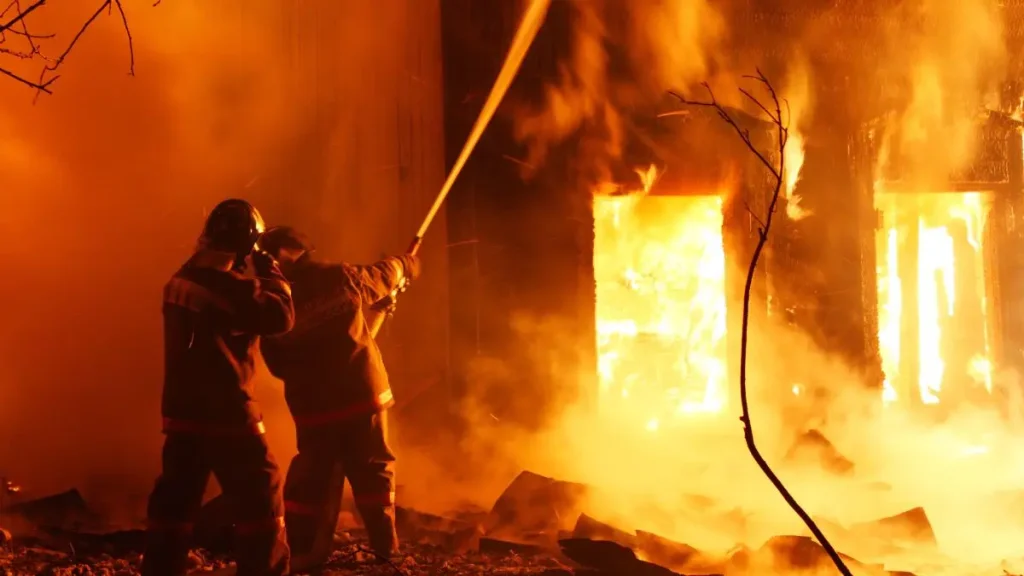71-Year-Old Woman Found Dead in Salem Home Fire
When I first read about the fire on Oak Park Drive, I couldn’t help picturing what those final minutes must have felt like. A quiet street, a modest home, and then, just after noon on October 29, smoke rising into the sky. By 12:34 p.m., emergency calls were pouring in from neighbors. Within minutes, fire crews reached the 4900 block near Silverton Road and Cordon Road — but the house was already swallowed by flames.
The Marion County Sheriff’s Office later confirmed what no one wanted to hear: a 71-year-old woman, Lesa Lemons, was found dead inside. Firefighters tried to battle back the blaze, but by the time they gained entry, the structure was completely engulfed. Crews stayed well into the evening, still hosing down hotspots as investigators marked the scene.
I keep thinking about how fast it all happened — minutes between life and tragedy. The sheriff’s office says the cause is still under investigation, though early signs suggest it isn’t suspicious. That phrase — “not suspicious” — might sound procedural, but it also means there’s likely no crime here, just a devastating accident.
Stories like this always hit harder when they happen close to home. If you’ve ever watched first responders rush toward danger, you know the helplessness that settles over a neighborhood afterward — the smell of smoke lingering, the quiet once the sirens fade.
How do you feel when you read something like this — sadness, fear, maybe a reminder to check your own smoke alarms? I’d love to know what safety changes you think most people overlook at home.
Fire Investigation — What Officials Know So Far

After reading the initial updates from the Marion County Sheriff’s Office, I turned to the Statesman Journal report to see what investigators were saying. They confirmed the fire’s timeline — that first call at 12:34 p.m., crews arriving almost immediately — but by the time they reached Oak Park Drive, the house was already burning end to end.
What stood out to me in the Statesman Journal’s coverage was the calm, factual way officials described the scene: “the home was fully engulfed upon arrival.” It’s the kind of line you see often in fire reports, but when you think about what it means — that firefighters couldn’t even get close enough at first — it hits differently.
Right now, the cause of the fire is under investigation, and officials have said it does not appear to be suspicious. No arson, no foul play — just an accident they’re still trying to trace. Maybe faulty wiring, maybe a heating issue. We’ll know more once the fire marshal’s report comes out.
I’ve covered enough of these stories to know that “under investigation” can stretch for weeks. But one thing feels certain: this wasn’t about negligence or crime — it was about how fragile a home becomes when fire takes hold faster than anyone expects.
Who Was Lesa Lemons — Remembering the Victim
In KPTV’s coverage, the name Lesa Lemons appeared in the second paragraph. Seventy-one years old, found inside her burned home. That single sentence carried the weight of a life, decades of quiet routine, now gone in minutes.
Neighbors told KPTV they often saw her outside tending to her yard — nothing dramatic, just the small, steady rhythm of daily living. It’s hard not to think about how quickly those ordinary details vanish after something like this.
From what’s been reported, Lesa lived alone in that house. There were no pets, no roommates, no one else there to call for help. For me, that’s what makes this story sting most — the loneliness of it. I imagine she had no idea how bad the fire was until it was too late.
I wish every story like this included a little more about the person — what she loved, who she talked to, what made her smile. Because behind every line in a police report is a full, quiet life that mattered.
Similar heartbreak unfolded earlier this month when a fire at a multifamily home in Hartford killed one person and displaced nine others — another reminder of how unpredictable these incidents can be.
House Fires and Seniors — A Hidden Risk
I’ve looked into fire-safety data before, and something always stands out: older adults are the most at risk. According to the National Fire Protection Association, adults aged 65 and over face more than double the risk of dying in a home fire compared to younger people. In Oregon, that pattern holds true — many of the state’s fatal fires involve seniors living alone.
It’s easy to assume it won’t happen to us, but age changes how quickly we can react. Mobility, slower hearing, a misplaced smoke-detector battery — small things add up fast in an emergency.
Reading about Lesa’s case reminded me how many homes still rely on old wiring or space heaters pushed too close to furniture. It’s rarely one dramatic mistake; it’s the little oversights that build up quietly over time.
Many local residents have been sharing fire-safety reminders and updates through community WhatsApp groups, where verified alerts often reach neighbors faster than news outlets. If you follow such safety channels, it’s a good way to stay informed when emergencies unfold nearby.
Fire Safety Takeaways — What You Can Do Right Now

If there’s one thing stories like this teach me, it’s that prevention isn’t complicated — it’s consistency.
Check your smoke alarms this week, not “someday.” Replace old batteries even if the test beep still works. Keep exits clear, especially in bedrooms, and make sure windows actually open easily.
If you have older parents or neighbors, stop by and help them test alarms or move flammable items away from heaters. A five-minute visit can literally save a life.
These steps sound simple, but every firefighter I’ve ever spoken with says the same thing — the smallest habits make the biggest difference.
So let me ask you: when was the last time you checked your smoke detector or thought about an escape plan? Because reading about Lesa Lemons shouldn’t just make us sad — it should make us act.
It brought to mind another devastating case where a home in West Virginia was destroyed in an early-morning fire, showing how quickly fire can turn ordinary life upside down.
What Happens Next in the Investigation?
Even after the fire trucks leave and the headlines fade, the work doesn’t stop. The Marion County Sheriff’s Office, along with state fire investigators, will spend days—sometimes weeks—sifting through what’s left: scorched beams, melted outlets, patterns in the ash that tell a story only they can read.
At this stage, officials haven’t confirmed what caused the fire, but the early signs are consistent with an accident. Once investigators pinpoint the ignition source—whether it was wiring, heating equipment, or something else—they’ll issue a public report. That document will help the family, insurance companies, and local authorities close the loop on what really happened inside that small home on Oak Park Drive.
I’ve followed enough cases like this to know that answers don’t always bring closure, but they do bring perspective. Sometimes, knowing the “why” is the only way a community starts to feel safe again.
So tell me—what’s one thing you think most of us forget when it comes to fire safety at home?
Want to read more real stories about home safety and fire incidents across the U.S.? Visit our Home Incidents section for the latest coverage and prevention insights.
Disclaimer: Details in this article are based on official statements from the Marion County Sheriff’s Office and verified local news sources. Information may be updated as new findings emerge from the ongoing investigation. Readers are encouraged to follow official updates for the most accurate and current information.


